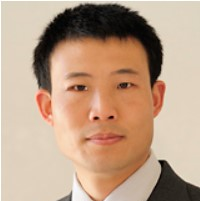Piezoelectric Nanogenerators for Micro-Energy and Self-Powered Sensors
A special issue of Micromachines (ISSN 2072-666X). This special issue belongs to the section "A:Physics".
Deadline for manuscript submissions: closed (10 April 2021) | Viewed by 28721
Special Issue Editors
Interests: mechatronics and micromechatronics; robotics and microrobotics; smart materials based systems; piezoelecticity and piezoelectric systems; actuators and microactuators; miniaturized sensors; modeling; control; estimation; observers; identification
Special Issues, Collections and Topics in MDPI journals
Interests: nanogenerator; piezotronics; piezoelectric; sensor; ferroelectric
Special Issues, Collections and Topics in MDPI journals
Interests: piezoelectric/triboelectric nanogenerators; triboelectric mechanisms and piezoelectric (photo)electronics; other applied fundamentals; functional devices; integrated systems research
Special Issues, Collections and Topics in MDPI journals
Special Issue Information
Dear Colleagues,
Energy harvesting consists of scavenging energy from the surrounding environment knowing that this energy would be “lost” if not scavenged. To scavenge small-scale kinetic energy, the use of a piezoelectric nanogenerator (PENG) is one of the most studied and developed approaches. It is based on the exploitation of the direct piezoelectric effect to transform the ambient kinetic energy—mostly vibrational—into electrical energy. Whilst the term PENG was initially introduced when referring to ZnO nanowires being used as materials to scavenge such small-scale energy, the word nowadays refers to piezoelectric energy harvesting more generally, whether standard materials (e.g., PZT, AlN) or novel materials (e.g., nanowires) are employed. Indeed, the driving mechanism of PENG is Maxwell’s displacement current. Potential applications of PENG are numerous as it allows self-powered and autonomous nano-, micro-, mini-, or meso-scaled devices, for example, implantable electronics in biomedical applications, geotracers and animal tracking devices, wearable devices, multifunctional shoes, tires monitoring sensors, autonomous sensors in automotives, building monitoring sensors, and self-powered vibration damping devices in structures. Nowadays, we are witnessing a variety of attractive approaches in the emerging research and development for increasingly more efficient PENGs with more diversified applications. This Special Issue aims to present a collection of articles, including review papers, that cover the recent research and development on PENG techniques as well as their applications. Collectively, the papers in this issue will address fundamental, technological, and application aspects.
Prof. Micky RakotondrabeProf. Rusen Yang
Prof. Zhong Lin Wang
Guest Editors
Manuscript Submission Information
Manuscripts should be submitted online at www.mdpi.com by registering and logging in to this website. Once you are registered, click here to go to the submission form. Manuscripts can be submitted until the deadline. All submissions that pass pre-check are peer-reviewed. Accepted papers will be published continuously in the journal (as soon as accepted) and will be listed together on the special issue website. Research articles, review articles as well as short communications are invited. For planned papers, a title and short abstract (about 100 words) can be sent to the Editorial Office for announcement on this website.
Submitted manuscripts should not have been published previously, nor be under consideration for publication elsewhere (except conference proceedings papers). All manuscripts are thoroughly refereed through a single-blind peer-review process. A guide for authors and other relevant information for submission of manuscripts is available on the Instructions for Authors page. Micromachines is an international peer-reviewed open access monthly journal published by MDPI.
Please visit the Instructions for Authors page before submitting a manuscript. The Article Processing Charge (APC) for publication in this open access journal is 2600 CHF (Swiss Francs). Submitted papers should be well formatted and use good English. Authors may use MDPI's English editing service prior to publication or during author revisions.
Keywords
- vibrational PENG
- hybrid PENG
- new piezoelectric materials for PENG
- structure optimization in PENG
- electrical circuits in PENG
- multidirectional PENG
- multifrequency PENG
- broadband PENG
- modeling in PENG
- applications of PENG








